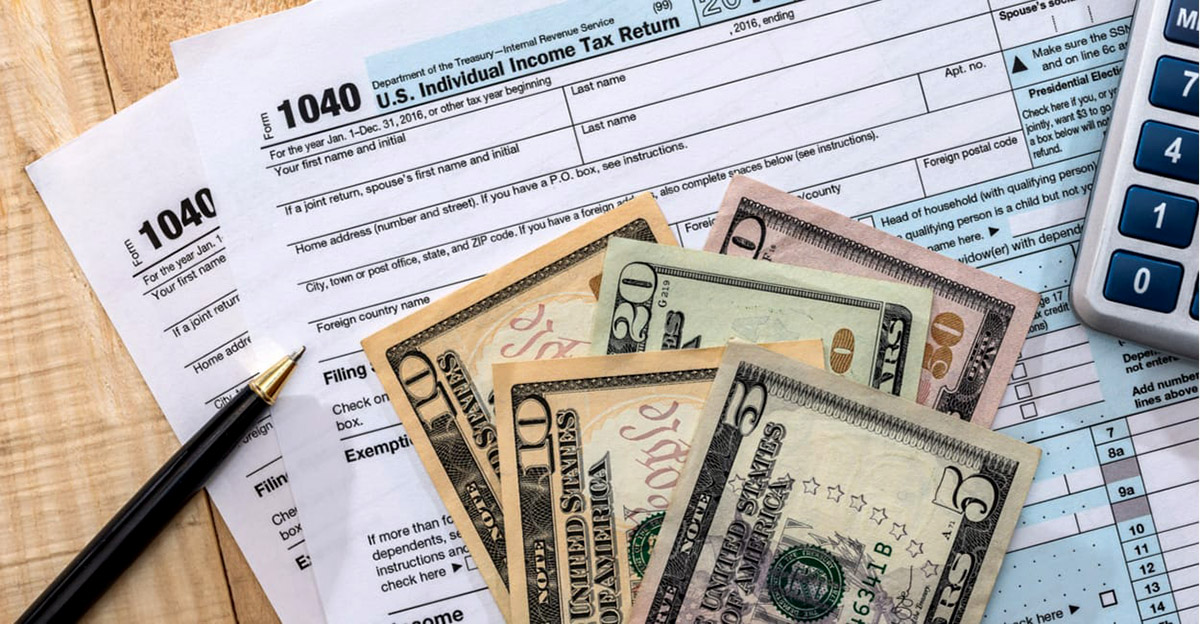

Finance
How Do You Get An Eviction Off Your Credit
Published: January 5, 2024
Are you struggling with an eviction on your credit report? Discover effective strategies to remove evictions and improve your financial standing.
(Many of the links in this article redirect to a specific reviewed product. Your purchase of these products through affiliate links helps to generate commission for LiveWell, at no extra cost. Learn more)
Table of Contents
- Introduction
- Understanding Evictions on Your Credit Report
- Steps to Remove an Eviction from Your Credit
- Method 1: Validate the Accuracy of the Eviction
- Method 2: Negotiate with the Landlord or Collection Agency
- Method 3: Pay off the Debt and Request a Removal
- Method 4: Wait for the Eviction to Be Automatically Removed
- Method 5: Dispute the Eviction with the Credit Bureaus
- Conclusion
Introduction
Having an eviction on your credit report can have a significant negative impact on your financial standing. It can make it harder to secure future housing, obtain loans, and even get approved for credit cards. Therefore, it’s essential to understand how you can remove an eviction from your credit report and improve your financial well-being.
An eviction occurs when a tenant is forced to leave a rental property due to non-payment of rent, lease violations, or other contractual breaches. When an eviction is filed against you, it becomes part of your public record, which can then be reported to the credit bureaus and included in your credit report. This can have long-lasting consequences and may negatively affect your creditworthiness for up to seven years.
In this article, we will explore various methods to help you get an eviction off your credit report. It’s important to note that there is no guaranteed way to remove an eviction, as it depends on the specific circumstances and the participation of the parties involved. However, with persistence and knowledge of the process, you can increase your chances of success.
Before diving into the methods, it’s vital to emphasize the importance of understanding your rights as a tenant and familiarizing yourself with local eviction laws. Additionally, it’s crucial to review your credit report regularly and monitor any changes or inaccuracies.
Now let’s explore the steps you can take to remove an eviction from your credit report and take control of your financial future.
Understanding Evictions on Your Credit Report
When an eviction is filed against you, it becomes part of your public record. This means that it can be reported to the credit bureaus and have a significant impact on your creditworthiness. Understanding how evictions are reported on your credit report is crucial in your journey to remove them.
Evictions typically appear under the public records section of your credit report. They are often listed as “eviction judgments” or “unlawful detainers.” The information provided will include the name of the landlord or property management company, the date the eviction was filed, the amount owed, and any additional court information.
It’s important to note that while the eviction itself may be damaging to your credit, any resulting collection accounts or judgments from the eviction can further harm your creditworthiness. These additional negative marks can stay on your credit report for up to seven years, making it more challenging to obtain new housing or secure credit in the future.
Furthermore, the impact of an eviction on your credit score can vary. The more recent the eviction, the more significant the impact on your credit score. Additionally, the severity of the eviction, such as the amount owed and the circumstances surrounding it, can also play a role in the extent of the credit score decrease.
It’s important to remember that while an eviction may negatively impact your credit, it’s not the end of the road. There are steps you can take to improve your creditworthiness and remove the eviction from your credit report.
Now that we have a better understanding of how evictions are reported on your credit report, let’s delve into the steps you can take to remove them.
Steps to Remove an Eviction from Your Credit
Removing an eviction from your credit report may require time, effort, and persistence. While there is no guaranteed method, there are several steps you can take to increase your chances of success. Here are the key steps to follow:
- Step 1: Validate the Accuracy of the Eviction: Start by thoroughly reviewing your credit report to ensure the accuracy of the eviction information. Look for any errors in the dates, amounts, or other details. If you identify any inaccuracies, you can dispute them with the credit bureaus. This step is essential as it ensures you are dealing with legitimate information on your credit report.
- Step 2: Negotiate with the Landlord or Collection Agency: Reach out to the landlord or collection agency associated with the eviction. Communicate your willingness to resolve the issue and request a negotiated settlement. Explain your circumstances, express your commitment to resolving the debt, and propose a reasonable payment plan. Negotiating with the involved parties can sometimes lead to a mutually beneficial agreement, including the removal of the eviction from your credit report.
- Step 3: Pay off the Debt and Request a Removal: If you are financially able, consider paying off the debt in full. Once the debt has been satisfied, contact the landlord or collection agency to request that they remove the eviction from your credit report as part of the agreement. Obtain written confirmation of the removal request for your records.
- Step 4: Wait for the Eviction to Be Automatically Removed: In some cases, an eviction may be automatically removed from your credit report after a certain period. Typically, this period is seven years from the date of the filing. While waiting for the eviction to be removed, focus on improving other aspects of your credit history, such as making timely payments on your current obligations and maintaining a low credit utilization ratio.
- Step 5: Dispute the Eviction with the Credit Bureaus: If all else fails, you can dispute the eviction directly with the credit bureaus. File a formal dispute stating your case and providing any supporting documentation that strengthens your position. The credit bureaus are required to investigate your dispute and remove any inaccurate or unverifiable information from your credit report.
Remember, removing an eviction from your credit report is not a quick fix. It requires patience and persistence. It’s also crucial to maintain good financial habits moving forward to rebuild your creditworthiness and protect your financial future.
Now that we’ve covered the main steps involved in removing an eviction from your credit report, let’s explore each method in more detail.
Method 1: Validate the Accuracy of the Eviction
One of the first steps you should take when trying to remove an eviction from your credit report is to validate the accuracy of the eviction information. Errors can occur, and it’s essential to ensure that the eviction is indeed valid and belongs to you. Here’s how to validate the accuracy of the eviction:
- Review your credit report: Obtain a copy of your credit report from all three major credit bureaus – Experian, Equifax, and TransUnion. Carefully review the section that contains public records and look for the eviction information. Check for any discrepancies in dates, amounts owed, or other details. It’s crucial to ensure that the information being reported is accurate and belongs to you.
- Gather supporting documentation: Collect all relevant documents associated with the eviction, such as lease agreements, rental payment receipts, and any correspondence with your landlord. These documents will serve as evidence to support your case if you need to dispute the eviction with the credit bureaus.
- Contact the court or landlord: Reach out to the court or landlord who filed the eviction against you. Request a copy of the eviction judgment and any other documents related to the case. Review these documents to ensure that the information matches what is reported on your credit report. If you find any discrepancies, inform the court or landlord and ask for corrections to be made.
- Dispute inaccurate information: If you discover any errors or inaccuracies during the validation process, you have the right to dispute them with the credit bureaus. File a formal dispute stating the errors and provide any supporting documentation to strengthen your case. The credit bureaus are required by law to investigate your dispute and remove any inaccurate information from your credit report if it cannot be verified.
By validating the accuracy of the eviction, you can ensure that you are dealing with legitimate information on your credit report. This step is crucial to establishing a strong foundation when attempting to remove the eviction from your credit report.
Now that we’ve covered the first method, let’s move on to method number two, which involves negotiating with the landlord or collection agency.
Method 2: Negotiate with the Landlord or Collection Agency
When trying to remove an eviction from your credit report, it’s worth considering negotiating with the landlord or collection agency associated with the eviction. Sometimes, reaching a mutually beneficial agreement can lead to the removal of the eviction from your credit report. Here are the steps to negotiate with the landlord or collection agency:
- Contact the landlord or collection agency: Begin by reaching out to the landlord or collection agency involved in the eviction. Explain your situation and express your willingness to resolve the debt. It’s important to approach the conversation with a positive attitude and a willingness to find a solution that works for both parties.
- Propose a payment plan: In your negotiation, offer a realistic and affordable payment plan that demonstrates your commitment to repaying the debt. Consider presenting a lump sum offer or monthly installment options. Emphasize your intention to fulfill your financial obligations and request their cooperation in removing the eviction from your credit report as part of the agreement.
- Get the agreement in writing: If the landlord or collection agency agrees to your proposed payment plan and removal request, make sure to obtain a written agreement. The agreement should clearly specify the terms of the payment arrangement and state that upon fulfillment, the eviction will be removed from your credit report. Having written documentation is crucial to protect your rights and hold both parties accountable.
- Follow through with the payment plan: Once you have reached an agreement, it’s essential to honor your commitment and make timely payments as agreed upon. By fulfilling your financial obligations, you demonstrate responsibility and commitment. This can further strengthen your case for the removal of the eviction from your credit report.
- Request removal after full payment: Upon finalizing the payment plan and fulfilling your financial obligations, contact the landlord or collection agency to request the removal of the eviction from your credit report. Provide them with a copy of the written agreement as a reminder of the agreed-upon terms.
While negotiation is not always successful, it is still worth attempting as it presents an opportunity to find a resolution that benefits both parties. Remember to approach these negotiations with professionalism and respect to increase the likelihood of a positive outcome.
Now that we’ve covered method number two, let’s move on to method three, which involves paying off the debt and requesting a removal.
Method 3: Pay off the Debt and Request a Removal
If you have the financial means to do so, paying off the debt associated with the eviction can be an effective way to remove it from your credit report. Here are the steps to follow for Method 3: Pay off the Debt and Request a Removal:
- Assess your finances: Evaluate your current financial situation to determine if you have the necessary funds to pay off the outstanding debt. Analyze your budget and consider the impact that using these funds will have on your overall financial stability.
- Contact the landlord or collection agency: Reach out to the landlord or collection agency associated with the eviction to obtain the exact amount owed and inquire about acceptable payment methods. Request a statement in writing that confirms the total amount due.
- Make the payment: Once you have the required information, proceed with making the payment in full. Ensure that you have a record of the transaction, such as a receipt or confirmation number, for future reference.
- Request removal from your credit report: Contact the landlord or collection agency after the payment has been made and request that they remove the eviction from your credit report. Explain that you have fulfilled your financial obligation and provide them with proof of payment, such as a copy of the receipt or bank statement.
- Follow up: If the eviction is not promptly removed from your credit report after making the payment and requesting its removal, follow up with the landlord or collection agency. Remind them of your agreement and provide any necessary documentation as evidence of payment.
It’s important to note that obtaining written confirmation of the payment and removal agreement is crucial. This documentation will serve as evidence and protect your rights if any discrepancies arise in the future. Additionally, remember to track your credit report to ensure that the eviction is indeed removed as promised.
Removing an eviction from your credit report by paying off the debt showcases your commitment to resolving past financial obligations. It can also help improve your creditworthiness moving forward.
Now that we’ve covered Method 3, let’s move on to Method 4, which involves waiting for an eviction to be automatically removed.
Method 4: Wait for the Eviction to Be Automatically Removed
In some cases, waiting for the eviction to be automatically removed from your credit report is a viable option. Negative information, including evictions, typically remains on your credit report for seven years from the date of the filing. Here are the key points to consider for Method 4: Wait for the Eviction to Be Automatically Removed:
- Understand the timeline: Know the date when the eviction was filed and added to your credit report. Generally, the seven-year timeframe starts from that date. Keep in mind that the impact of the eviction on your credit score will decrease over time.
- Focus on other credit factors: While waiting for the eviction to be automatically removed, concentrate on other aspects of your credit history that you can improve. Make timely payments on your current financial obligations, reduce your credit card balances, and establish a positive payment history. This proactive approach can help offset the impact of the eviction on your creditworthiness.
- Review your credit reports regularly: Monitor your credit reports from all three major credit bureaus – Experian, Equifax, and TransUnion. Verify that the eviction is indeed scheduled for automatic removal after the specified seven-year period.
- Dispute any errors: If you notice any errors or inaccuracies regarding the eviction information during this waiting period, you have the right to dispute them with the credit bureaus. File a formal dispute and provide any supporting documentation to rectify the inaccuracies.
While waiting for the eviction to be automatically removed may require patience, it can be an effective strategy if you prefer to let time take its course. Focus on improving other aspects of your creditworthiness during this waiting period to rebuild your financial standing.
Now that we’ve discussed Method 4, let’s move on to Method 5, which involves disputing the eviction with the credit bureaus.
Method 5: Dispute the Eviction with the Credit Bureaus
If all other methods have been unsuccessful, or if you believe there are inaccuracies in the eviction information on your credit report, you can dispute the eviction directly with the credit bureaus. Here’s how to proceed with Method 5: Dispute the Eviction with the Credit Bureaus:
- Obtain your credit reports: Request copies of your credit reports from all three major credit bureaus – Experian, Equifax, and TransUnion. Review each report carefully to identify the specific credit bureau(s) reporting the eviction.
- Identify inaccuracies: Scrutinize the eviction details, including dates, amounts owed, and other relevant information. If you notice any errors or discrepancies, gather supporting documentation to substantiate your claims.
- Submit a dispute: Write a formal letter to the credit bureau(s) that reported the eviction, clearly stating the inaccuracies and providing any evidence or supporting documentation. Be specific, concise, and assertive in your dispute letter.
- Include supporting documentation: Attach copies of any relevant documents, such as rental agreements, payment receipts, or court records, that support your dispute. These documents serve as essential evidence and can increase the likelihood of a successful dispute.
- Follow up: After submitting your dispute, keep track of the communication and maintain thorough records of all correspondence. The credit bureaus have 30 days to investigate and respond to your dispute. If necessary, follow up with them to ensure a prompt resolution.
- Monitor your credit report: Regularly review your credit report after disputing the eviction. Confirm whether the credit bureau(s) have removed the eviction information or made the necessary corrections. If the eviction is not removed or the inaccuracies persist, you may need to escalate the dispute or seek legal advice.
Disputing the eviction with the credit bureaus is an effective way to rectify any errors or inaccuracies on your credit report. It requires attention to detail, proper documentation, and persistence. Keep in mind that the success of your dispute depends on the thoroughness of your arguments and the supporting evidence you provide.
Now that we’ve discussed all five methods of removing an eviction from your credit report, let’s conclude our article.
Conclusion
Having an eviction on your credit report can be a significant obstacle to obtaining future housing, loans, and credit cards. However, there are steps you can take to remove an eviction from your credit report and improve your financial standing.
First and foremost, it’s crucial to validate the accuracy of the eviction information on your credit report. Review your credit reports, gather supporting documentation, and contact the court or landlord to ensure the information is correct. If inaccuracies are found, dispute them with the credit bureaus.
Next, consider negotiating with the landlord or collection agency associated with the eviction. Propose a payment plan and request the removal of the eviction from your credit report in exchange for fulfilling your financial obligations.
If you have the means, paying off the debt in full can also be an effective method. Once the payment is made, request the removal of the eviction from your credit report and maintain proper documentation.
Waiting for the eviction to be automatically removed after the specified seven-year period is another option. During this time, focus on improving other aspects of your credit and monitor your credit reports for any errors.
If all else fails or if there are inaccuracies that persist, dispute the eviction with the credit bureaus. Provide a formal letter and supporting documentation to strengthen your case.
Remember, the process of removing an eviction from your credit report takes time and persistence. It’s essential to maintain good financial habits moving forward and regularly monitor your credit reports to ensure accurate information.
By following these methods and being proactive in your approach, you can take control of your financial future and work towards a clean credit history, even in the face of past eviction.














